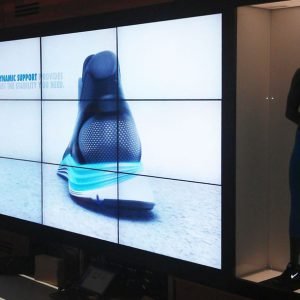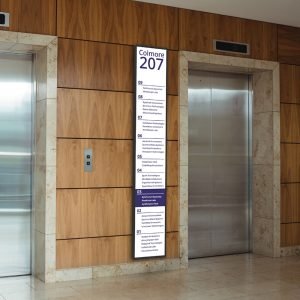Consumers are flooded with daily adverts through the internet, TV, radio, newspapers, magazines, and even billboards; hence, the current generation of businesses need unique and more effective means of capturing their attention. That is why digital signage is one of the most effective tools that started to evolve into real leverage. Digital signage is not just a more innovative, contemporary form of static signs but also boosts an engaging and interactive aspect, significantly improving customer engagement. This blog will discuss the concepts of enhancing customer relations and gaining competitive advantages through digital signage.
Captivating Visual Appeal
One of the most compelling features of digital signage is its ability to attract customers through bright and clear images. People pay more attention to what’s posted on digital screens than to the classic forms of signs that people tend to ignore, thinking they are familiar with them. This visual appeal is also most effective in places where the competition for customer attention is extremely high, most especially in the retail business. Companies can make good use of dynamic content by making sure that they elicit some powerful visuals that tend to be easily remembered.
Personalised Customer Experiences
Targeted advertising is a highly effective way to reach customers, and digital signage excels in this area. Advanced digital signage solutions can use big data to personalise the content displayed based on factors like age, gender, past spending patterns, and even facial recognition. For instance, a clothing store can use a customer’s browsing history to show relevant alerts and suggestions. This level of personalisation enhances the customer experience and makes it easier to make a sale, as customers are presented with what they find most relevant based on their online activities.
Interactive Features
One key consideration for any successful customer communication strategy is interactivity, and thanks to its digital nature, digital signage boasts many engaging opportunities that plain old signs lack. In firm interactive technologies such as touch screens, clients can browse through catalogues, obtain information or orders, etc., right on the screen. This also increases the level of satisfaction by satisfying the customers’ need to find information about the products on their own. Moreover, dynamic information mobiles, whether placed inside malls, airports, or other megastructures, also enhance customers’ comfort by directing them around the area.
Real-Time Updates
It is essential to understand that traditional signage is effective but also quite limited, especially when it comes to being dynamic. After the document is printed, it becomes challenging and time-consuming, not to mention expensive, to make any alterations. Digital, on the other hand, can be changed in real-time; hence, the information provided is always up-to-date. Organisations benefit from the ability to make the change quickly, for instance, in promotions, events, or the sharing of vital information. This adaptability is especially advantageous regarding flexibility, such as in retail stores, where we often change stock and offers.
Engaging Social Media Integration
Knowing that people are increasingly using social media, connecting digital signage systems to social media platforms increases customer interest. It is possible to show instant messages from social networks, artefacts created by other people, and actual customers’ reviews, thus making a client feel like they are a member of a community and willing to interact with a particular brand. For instance, there is an Instagram page where people share pictures of food from restaurants; the restaurant can encourage diners to share their experiences on Instagram. It also improves the shopping experience within a store and carries the experience outside the store space.
Enhancing Brand Storytelling
Digital signage is an ideal way to share information with the audience, effectively introduce them to the brand’s values and mission, and, at the same time, highlight the key advantages that make the business unique. In this way, companies can turn their client’s experiences into emotional ones by relying on illustrations, videos, and widgets. It has a higher form of engagement than commercial interactions and thus establishes a more meaningful relationship between the brand and the target group. For example, a sustainable fashion company can employ this technology to display messages about the brand’s philosophy and initiatives and communicate the actual people behind the company’s apparel.
Measuring Engagement and Effectiveness
One of the key strengths of digital signage is its ability to be measured. Specific software applications can track interactions, time spent on the site, and conversion rates, providing valuable insights into customer behaviour and needs. This data can then be used to refine content and business approaches, ensuring that digital signage strategies are consistently aligned with business engagement objectives.
Conclusion
In today’s world, where customer attention is limited, digital signage is an excellent opportunity to catch customers’ attention. Compared to conventional signage, it offers the audience graphical content, an individual approach, and interaction. Through real-time update features, the integration of social networks, and, most importantly, the formation of impressive brand experiences, businesses can present exceptional experiences to their customers. Also, measuring and analysing engagement is essential to keep digital signage active and efficient in the constantly developing environment of interaction with customers. They are more than just being modernised in their operations; customers out there require new ways of being served, reached, and made to return for more.
Ready to transform your customer engagement? Explore our innovative digital signage solutions and see the difference for yourself! Contact us today to schedule a consultation and elevate your brand experience with cutting-edge digital signage.















